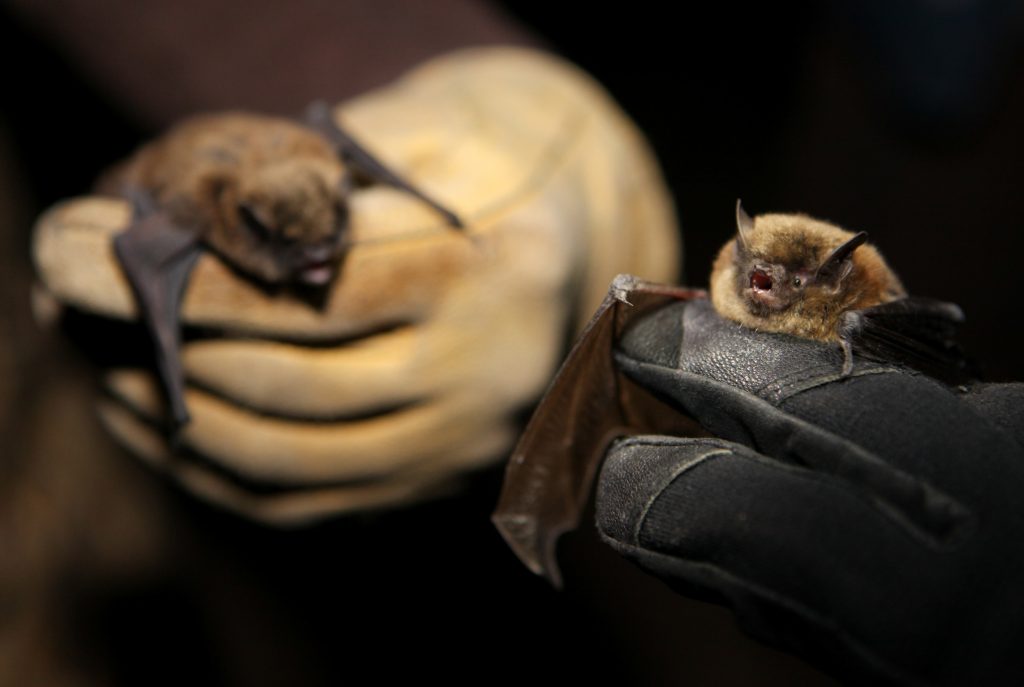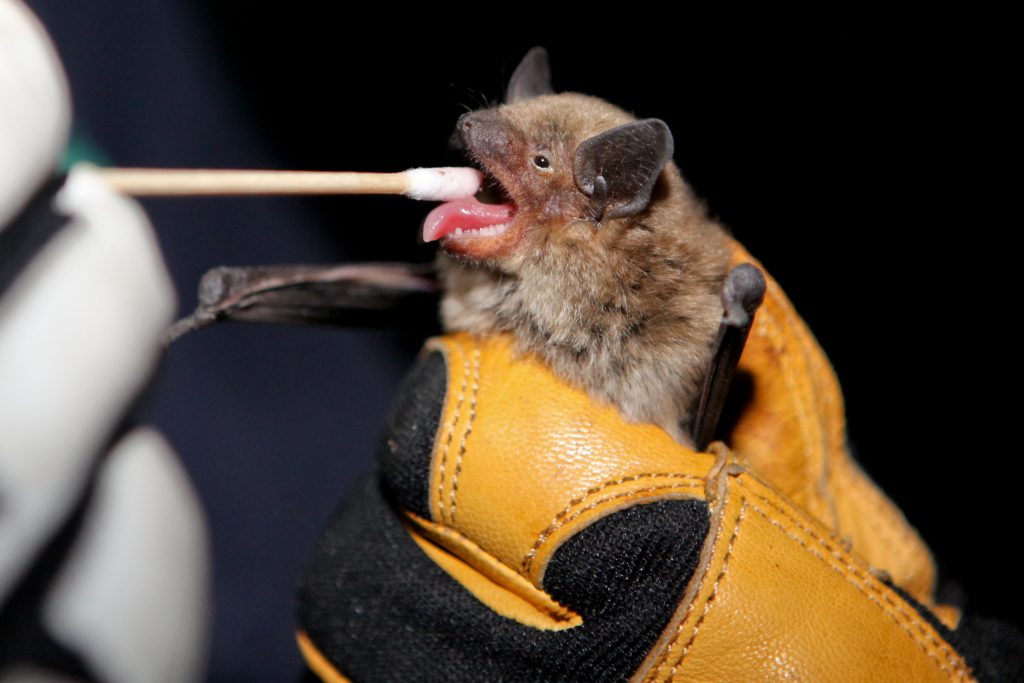There are more than 1,000 bat species in the world—making up a quarter of the world’s mammal population. Despite these favorable numbers, in recent years, many people living in the Northeast have noticed a precipitous drop in bat sightings. No longer are summer-night skies filled with bats, swooping and soaring in search of insects.
Over the past decade, a devastating fungus has spread across the United States and Canada, leaving millions of dead bats in its wake. The reason for this decline: white-nose syndrome, a disease caused by the fungus Pseudogymnoascus destructans that infects and kills bats during winter hibernation. Originally identified in 2006, the fungus has since spread from its initial site in New York to 33 states and five Canadian provinces, causing widespread mortality.
A new study by an international team of scientists led by researchers at Northern Arizona University and U.S. Geological Survey’s National Wildlife Health Center (NWHC) used genomic sequencing to assess where this fungus came from and how it is spreading.
“Previous genetic approaches found little genetic variation in the fungus, so we threw the whole kitchen sink at the problem,” said Jeff Foster, associate professor of biology at NAU and senior author on the study recently published in the journal mBio.
In doing so, researchers now know much more about the history of this pathogen.
The first question was to see if this was a native fungus—did this fungus already exist in North America and somehow emerge to cause an outbreak, or was it brought in from elsewhere?
“Our work provides solid evidence that Pseudogymnoascus destructans is not from the U.S. and was recently introduced,” said David Blehert, branch chief of NWHC’s Wildlife Disease Diagnostic Laboratories and co-author on the study.
The question then became, where did this fungus originate? Fungal samples from numerous European bats and a few Asian bats suggest the disease most likely came from Europe. To more definitively answer this question of origin, the researchers sequenced entire genomes and conducted genetic analyses of fungal isolates collected from North America and Eurasia. What they found was tremendous genetic diversity of the fungus in Europe and Asia with virtually no diversity in the U.S. and Canada, leading scientists to believe its introduction to North America was recent and the fungus has likely been in Eurasia for a long time.

“These results show that white-nose syndrome has likely affected bats across Eurasia for millennia,” Foster said. “Yet, despite infections with this fungus throughout those two continents, no recent die-offs have been documented in Eurasian bats—they appear to have evolved resistance to the disease.”
This is great news, according to Foster, and could mean the resistance Eurasian bats have evolved may be something that North America bats also can develop.
“The widespread movement of the fungus across North America indicates that there are few limits to its spread. Next, we will determine if North American bats are evolving resistance to allow for recovery of these populations.”
This study was supported by funding from the National Science Foundation–Ecology of Infectious Diseases (DEB-1336290), the U.S. Geological Survey, U.S. Fish & Wildlife Service (50120-B-G004) and Bat Conservation International.



